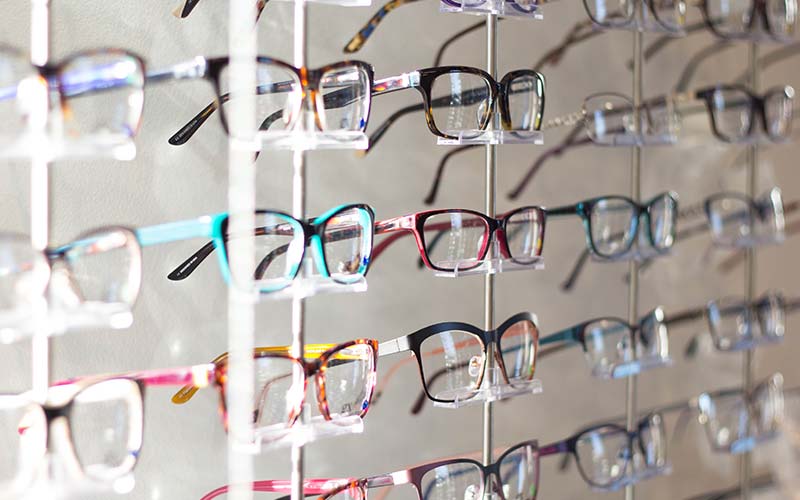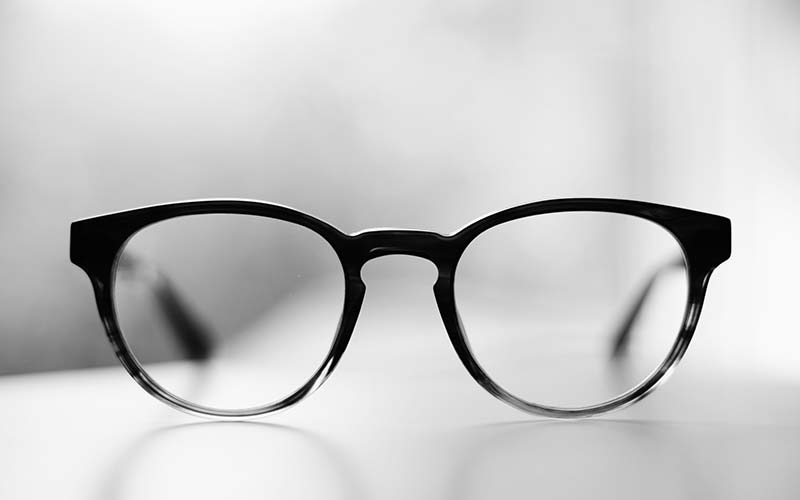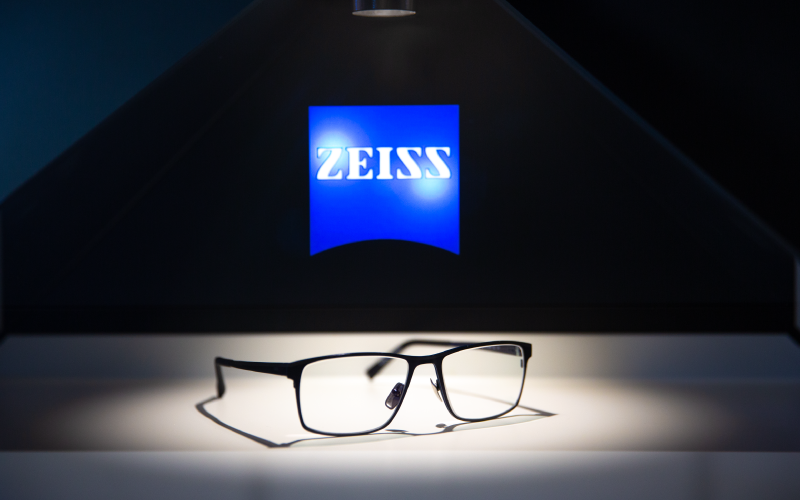
A S Carlson. Department of Optometry, University of Johannesburg.
It appears that the role of the Dispensing Optician is becoming less significant in private practice. Many optometrists still do not know the difference between a Dispensing Optician and an Optical Technician. Many think that they are the same but they are not. Dispensing Opticians study for three years and receive a National Diploma in Dispensing (NDP) and register with the HPCSA. They specialise in ophthalmic lenses, optical devices in providing spectacles to the public that suits one’s need. Optical technicians, however, do not undergo any official or registered training course and do not receive any official qualification. They work either in manufacturing workshops or in private optometric practices, either surfacing and/or cutting and fitting lenses. They learn on the job and are trained by the optometrist or people in the optical laboratory. Some learn surfacing and others fitting. There are no official entry requirements for the job and they do not register with the HPCSA or any other governing body.
How would one define ‘Dispensing’? Dispensing is (or was) ultimately defined (with tongue in cheek) by how well the eyewear makes contact with the patient. Therefore, a conscientious, precise, and personalized process of the patient’s needs, frame selection, lens design, and hands-on fitting is required. In too many cases obsessive and unrealistic sale goals override the clinician’s mission in providing Professional Healthcare whereby the personalized custom fitting of eyewear is given only the most minor consideration if any. Too often, the emphasis is placed on the number of customers served, rather than the quality of service provided to the customer. In order to excel as a dispenser, one must first have the attitude of a healer, and then, the sense of a merchant. Dispensing also includes procedures that involve eyewear adjustments performed by a skilled clinician, which include visual and touch as well as a tactile assessment of the frame while it is in place on the face of the patient in order to determine any misalignment. It also entails touch and feel that is required to fit, align, reshape, bend and stretch the components of the frame in order to personalize the eyewear for maximum visual comfort and wear-ability (see Figure 1).
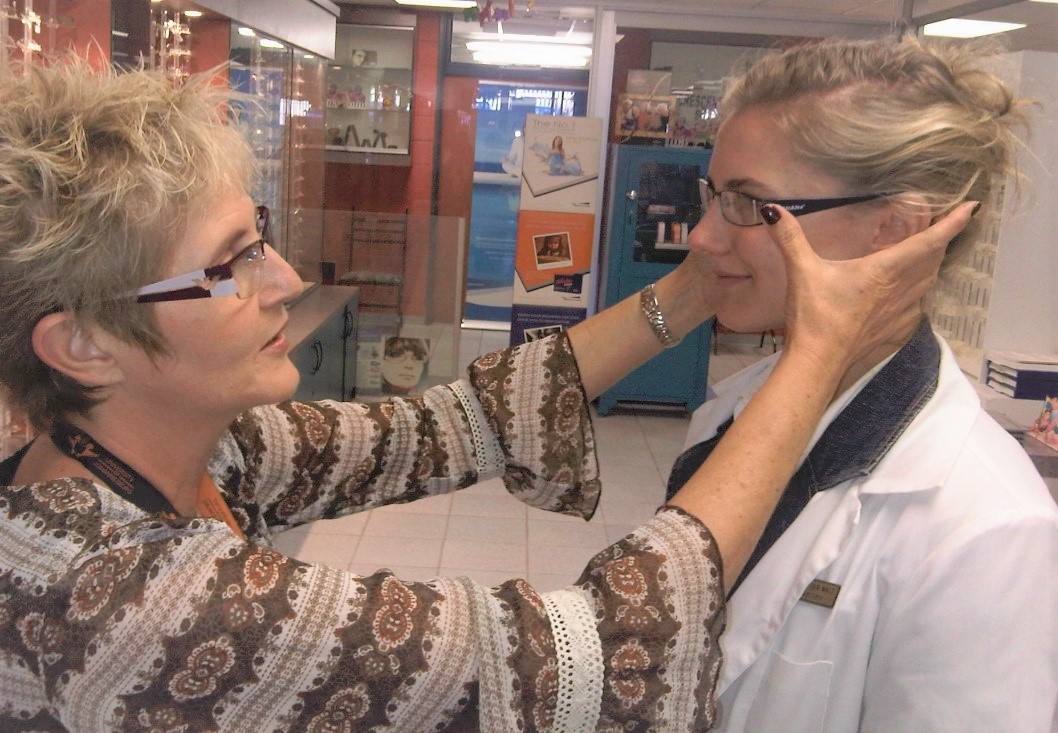
Figure 1. Dispensing includes procedures which involve eyewear adjustments performed by a skilled clinician which include visual and touch, tactile assessment of the frame while it is in place on the face of the patient in order to determine any misalignment, touch and feel that is required to fit, align, and in order to personalize the eyewear for maximum visual comfort and wear-ability.
With this, all said, why are there still typical complaints from the public such as;
- The lady behind the counter just handed me my glasses and asked me, “How do they feel?” (Frontliner ???)
- They just told me to bend down and shake my head to see if they fit okay, but they never adjusted my glasses. (Frontliner ???)
- I have been back on numerous occasions, but they just cannot get my glasses to fit properly. (Frontliner, Technician, Dispensing optician, Optometrist ???)
- I was told I needed progressive no-line bifocals instead of regular bifocals, but they didn’t explain why, or what the difference would be. (Dispensing Optician, Optometrist ???)
- I am battling to see out of my progressive lenses, but the optometrist says there is nothing wrong with them. (Dispensing Optician, Technician, Optometrist ???)
- My photochromic lenses do not go dark enough when I am driving and it takes too long to lighten when I come indoors after being outside for some time. (Frontliner, Optometrist, Dispensing Optician, Technician??)
- I have this coating on my lenses and don’t know why. (Frontliner, Dispensing Optician, Optometrist ???)
- I get this big sales pitch, then pay for the promised or implied high quality of service, none of which is received. (Dispensing Optician, Optometrist ???)
I assume some of these complaints are familiar in your practice. Each and every complaint is valid. The answer is fairly simple. The reason why they occur is because the clinician or the person that attended to the patient is not doing their job properly, not qualified, or not.
qualified enough to do the job. Are you chasing targets or are you seen as being a healer? They sometimes refer to these patients as problem patients. Yes, sure, there are patients who are problematic, however, there are always solutions provided you were aware of what you originally dispensed. Sometimes you make decisions hoping to solve the visual needs of the patient, but that does not always work. On many occasions your choice of lenses may not always suit the patient’s needs, however, you should always have alternate options available. Sometimes a ‘one size fits all’ is not functional for everyone. Lack of knowledge does not help the cause. In the eyes of many consumers, the up close and personal aspect of Dispensing eyewear has become an unfamiliar craft.
Optometry has expanded their scope of practice with the introduction of diagnostic and therapeutic privileges while the Dispensing profession appears to be stagnating. This is not due to a lack of trying. Much has been done to try and expand the scope, but to avail. Trying to get the board to change the regulation regarding ownership of the practice, employing optometrists on a locum or permanent basis, and even trying to upskill them to do basic refractions have all been turned down. Many qualified dispensers become glorified front liners, some leave the industry and some join manufacturing optical companies as lens consultants. Dispensing is an art and science that is slowly fading away. All one has to do is look around and see the quality of some very poor dispensing. Figures 2 to 5 show common frame fitting errors and their corresponding corrections that clinicians overlook. Optical wholesalers and private individuals, some who are not dispensers, offer basic dispensing courses for front-liners that sometimes infringe on the scope of the dispenser. The scope of Optometry is expanding towards ophthalmology, which, in one way we call progress, however, in my opinion, it is at the expense of basic clinical optometry and dispensing. The dispensers complain about the lack of dispensing CPD workshops and articles that are available. Moreover, at conferences, the pathology lectures are packed out while the dispensing and clinical optometry lecture halls are less full. It is the dispensing where the money is made, not the eye examinations. Optometrists would not survive if they were not allowed to dispense spectacles.
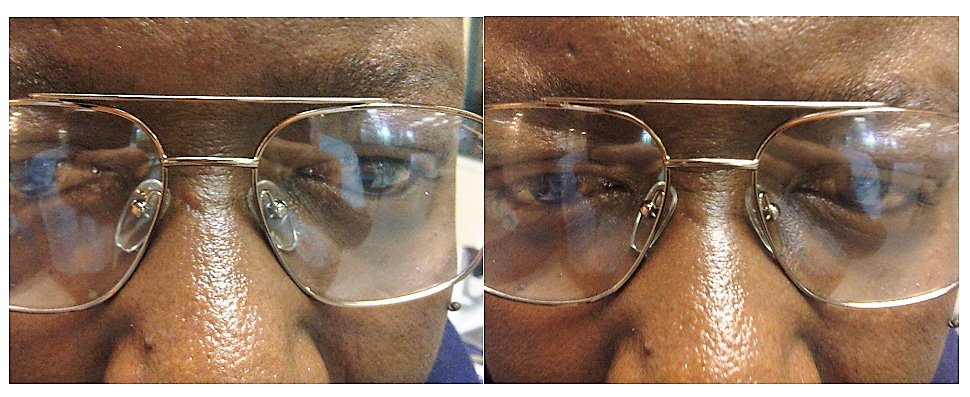
(a) (b)
Figure 2. (a) Nose pads not aligned. (b) Pads properly aligned and fitting comfortably.
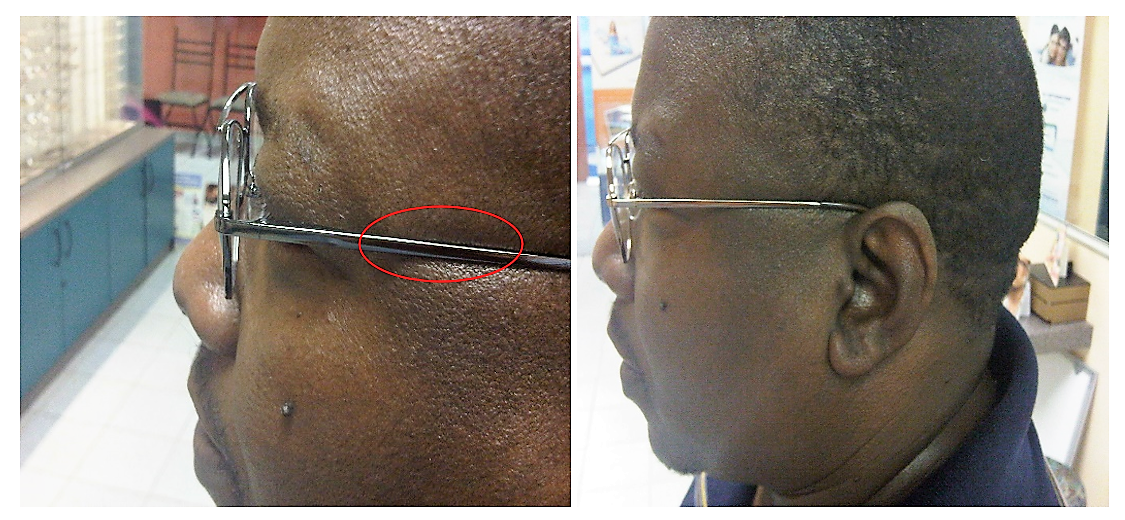
(a) (b)
Figure 3 (a) Temples fitting too tight. This will force glasses to slide down the face. (b) Open temples to relieve pressure.
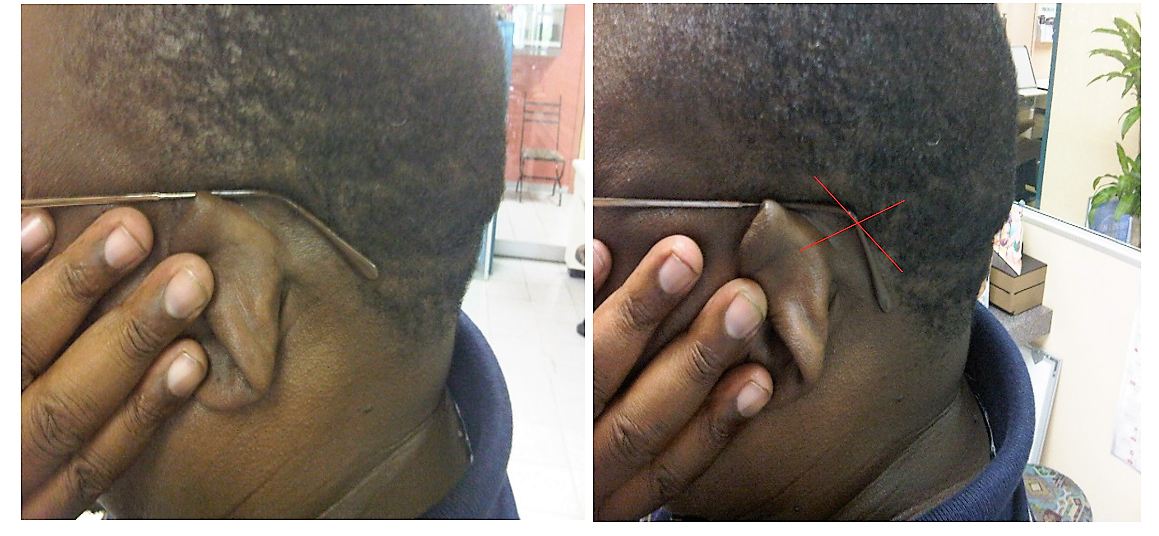
(a) (b)
Figure 4 (a). The patient complains glasses keep falling down. Temple length to bend is too far back. (b) A common error made is to bend tip down even more.
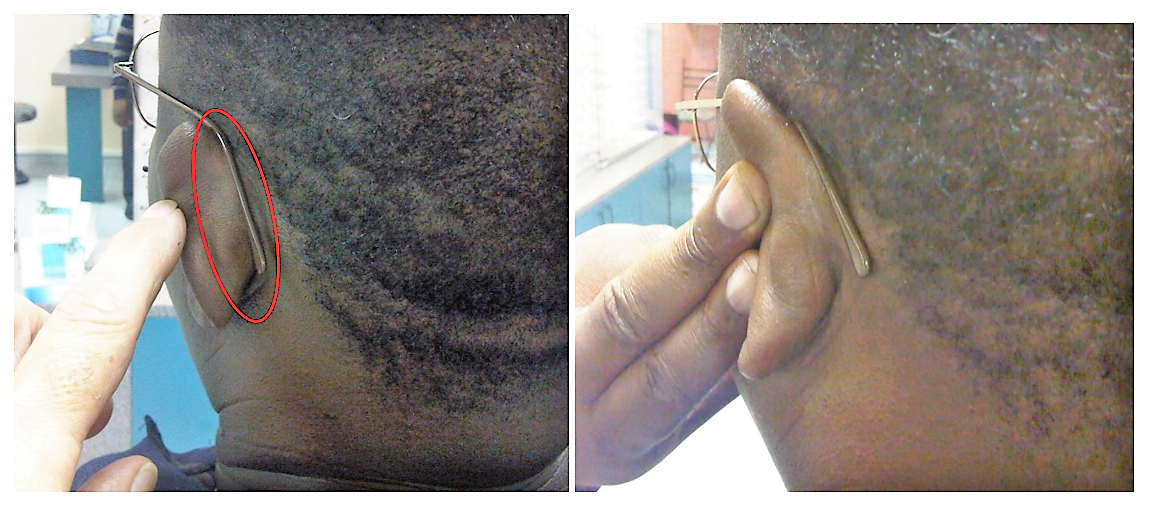
(a) (b)
Figure 5 (a). Shorten length to bend. (b). Make sure temple tip is flush with mastoid bone otherwise temple tip may irritate the top of the ear.
Dispensing Opticians are not allowed to employ optometrists. They are allowed to go into partnership with them conditionally. If a partnership is to be formed, the Dispensing Optician has no claim on the professional fee, however, the optometrist may have a share in the dispensing practice. Technicians are allowed to own workshops, but not allowed to dispense directly to the public. They may or may not be independent of Optometrists and if they are self- employed can supply lenses and frames as well as cut and fit the lenses for them. Dispensers rely on scripts from Ophthalmologists and Optometrists which are not easily obtainable.
Purchasing spectacles online is another obstacle that undermines the dispensing optician and of course, the optometrist. The online company will send you a few frames that you have chosen from their website. You select one that you like best, not necessarily the one that fits properly, and then together with your prescription, you send the frames back in a self-addressed envelope to the company. They will make up and deliver to your doorstep within a few days. You may need to send them your IPD measurement. If you are requesting progressive addition lenses, the same applies. A self -measuring kit to measure IPD measurements and pupil heights will be supplied if necessary. Some companies have an online camera that connects to your computer camera that will select a frame to suit your facial features and you can view a variety of frames online. You have a fairly wide selection of lenses to choose from. There is no one to check the frame fit or give any advice on what lens may be most suitable for your prescription nor anyone to fit the frame on your face properly (see Figure 6). How professional is this? What does this say for the dispensing and optical profession? It appears that these online companies do not have qualified professionals in their employ and have no idea of the importance of good dispensing.


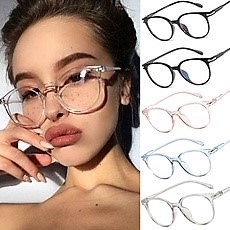
Figure 6. A typical example of runway fashion frames. However, may not be practical for all prescriptions.
Buying glasses online, however, does have its advantages: you may have a lot more frames to choose from than what your local optometrist has to offer, they often cost less, and you can even try them on in the comfort of your home. However, buying online isn’t a good choice for everyone. If you have a high or complicated prescription, for example, you may be better off buying glasses in person with the help of a professional. The same would apply if the glasses do not fit you properly. Even if you don’t have special prescription needs or fit problems, buying glasses online can still be risky. When you order online, the company places the optical centre on datum. If the IPD is not specified, the optical centre is placed at the geometric centre of the frame i.e. at the frame’s PD. This may not affect low prescriptions, however, if scripts are high or complicated, this may cause visual discomfort due to unwanted prismatic effect.
When an Optometrist or Dispensing Optician fits your spectacle frames, they will first examine the prescription and then select a frame that will suit the prescription. They will select a frame that fits the face properly. The nose bridge of the frame should fit well, the frame should not rest on the cheeks and the temple length should be long enough to fit properly behind the ears. Moreover, the frame size and shape should suit the patient’s facial features and also the prescription. This does not always occur as there are patients who are adamant with what they want and nothing will change their minds. In the case of anisometropic prescriptions, high refractive errors and if aspheric lenses are being prescribed, the optical centres of the lenses should align with the eye’s visual axis and vertex distances must be measured as this can affect the vergence of light entering the eye. These parameters are not considered with online dispensing. This is illustrated in Figures 7 and 8. The world’s marketing and business strategies are changing day by day. We tend to follow the American market – becoming more efficient and increasing profits, working seven days a week and offering quicker services than in the past. Optometry is no different.
In 2017, it was estimated that about eight million pairs of prescription eyeglasses were sold online worldwide. Two well- known online companies are ‘Warby Parker’and ‘Zenni Optical’. Zenni is a privately-held company founded in 2003 that has never raised outside capital and grows by 25-30% per year. In 2018 they did US$176 million in revenue and sold over four million pairs of prescription eyeglasses. Since the company began, they’ve sold over 20 million pairs, which Zenni says is equal to “the five-year sales volume of 1,000 brick and mortar stores”. It’s a classic case of an online merchant creating a product from design through production, selling direct-to-consumer, and saving them money. All that one has to do is search these websites for further information: https://www.wantitall.co.za/; https://www.smartbuyglasses.co.za/; and https://warbyparkersunglass.com/

Figure 7. The effects of vertex distance on the performance of lenses prescribed.
Something even more interesting is that a company called ‘Opternative’ has created an online eye examination. On October 30, 2017, the FDA sent Opternative a warning letter. The FDA did not say that the exam could not eventually be approved. Opternative is working with the FDA to hopefully get the approvals that they need. If Opternative or anyone else is eventually successful in putting eye examinations online, it will be much easier to buy prescription eyeglasses online than it is now. That will be a tremendous blow to the retail store structure selling eyeglasses and an enormous opportunity for sellers of prescription eyeglasses online. You only have to look to see how working habits, lifestyles, behaviours, and laws succumb when consumers demand convenience. Online ordering of spectacles has not been passed by the HPCSA and is, therefore. illegal., However, there are a few companies in South Africa that are doing it.
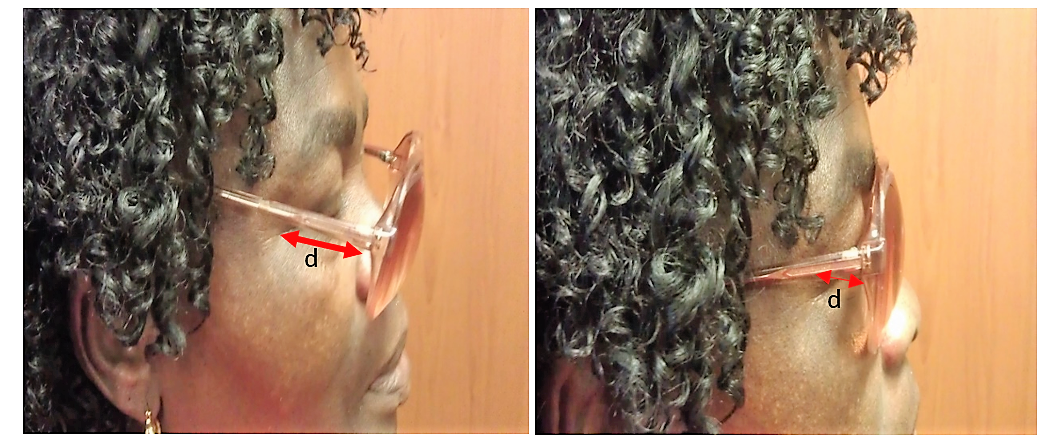
(a) (b)
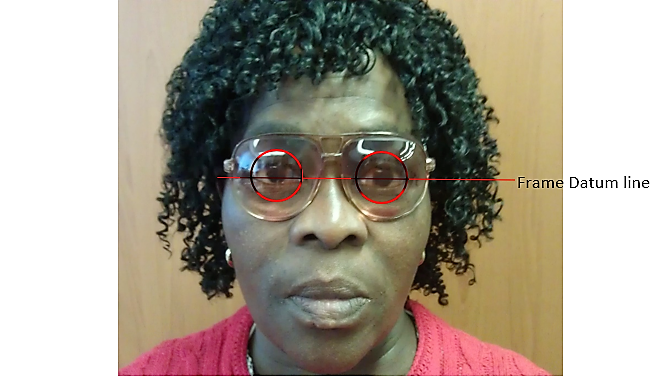
Figure 8. (a) Incorrect vertex distance for high positive Aspheric power lens. (b) Correct vertex distance and (c) correct vertex distance and optical centre heights for optic zones.
For any course to be registered and viable there has to be a need for the service that it provides. For the course to operate there has to be people or students who are interested in it. Without the students, the course cannot exist. For the course to develop and expand it must have good staff and leadership to maintain its standards. For the course and profession to progress it must keep up to date with new developments and move with the times. It must also maintain its need, and protect its profession from outside influences. The course should also contain content that may not form part of their scope of practice, however, still improve the student’s knowledge regarding the profession.
The Dispensing School at the Cape Peninsula University of Technology (CPUT) is the only university in the country that offers a full time three-year diploma course in Ophthalmic Dispensing. The university now offers an optional extra year of study for a degree in Dispensing. The fourth year offers an advanced course in dispensing and enables students to do research and go on to do Masters and Doctorate degrees. This is good provided they can encourage enough students to study further. The degree, however, should add status to the course and perhaps the student, but does the degree expand the scope of the dispenser? I am not so sure that it does. Perhaps refraction and contact lens fitting should also be included in the fourth year of study even though, at present, it does not fit into the scope of dispensing.
In the case of Dispensing, the Professional Board for Optometry and Dispensing is not approving their proposals to upgrade their scope of practice as they feel there is no need for what they are requesting. There is a need for dispensers, however, the scope also needs to be expanded like any other service providers, jobs must be available and there must be a need for the profession otherwise the profession stagnates and may even die a slow death. With Dispensing appearing to be stagnating, and more serious, outsiders performing their duties, the profession has to stand up and take action. I cannot see optometry sitting back and allowing others, like dispensers for example, to perform refractions. Why should dispensers allow others to dispense? The school should be pro-active and take the initiative and go ahead and expand the course content. Much of this could be done in the fourth year of study. Once they can prove competency in what they are studying and requesting and are not working in competition with Optometry but intend working with them, they can then apply to the board for approval to put that knowledge into practice.
To increase the number of enrolments for the course, the Dispensing school should re-introduce the course on a modular basis like they did a few years ago or offer the course as a distance learning course. This may encourage more front liners to do the course and they will certainly add more value to the practice. Moreover, they could also open a school for optical technicians. By doing this, it will upgrade the technician and make them more knowledgeable and more qualified. With Cape Town being the only Dispensing school available, many people cannot afford to do it full time. If they adopt the British method either by distance learning or a modular based course, this will alleviate many issues regarding illegal dispensing in the private practices.
There are standards for the quality of lenses being supplied to the industry. There are also standards for quality control of spectacles that are supplied to patients. However, there are many clinicians who are not aware of these standards. Although the larger companies operate to their own standards, there are many independent companies that import their own lenses that are cheap and of an inferior quality. Many optical companies who supply, manufacture and cut and fit lenses for optometrists are not qualified technicians nor dispensers and are self- taught. With these standards available, there are no gate keepers or organisations that monitor them. With lenses being classified as a medical device, it may be a good idea to incorporate a law whereby each company employs a registered dispenser to assure that the quality of lenses and spectacles supplied to the industry and practices are maintained. Perhaps the HPCSA should pass a law requiring all companies who wish to enter the optical profession, to register with them conditionally and this will be their gateway into the industry. By doing this, official training for the technicians must be provided as this will ensure that all technicians and optical suppliers are registered with the profession and that no unqualified or unskilled personnel can infringe in the profession. Perhaps the frontliners can also be included. In other words, the whole Optometric industry ties the technicians and front liners into the industry. This is something similar to what Dentistry has implemented. A dental technician is formally trained at a recognized institution to an NQF level 6 qualification in dental technology, and is registered with the South African Dental Technicians Council. I do not think it would be necessary to train the technician to an NQF level 6, however, formal training by a registered organization needs to be done and a certified certificate given after training.
This suggestion may be all pie in the sky, but if Dispensing is to progress then something must be done about it. Optometry is not happy with Online dispensing and neither are dispensers. Ophthalmology is very concerned with Optometry expanding their scope with therapeutics. Dispensing must continue to fight for what they want.
References
-
https://www.wantitall.co.za/; (Accessed 21 April 2020)
-
https://www.smartbuyglasses.co.za/; (Accessed 21 April 2020)
-
https://warbyparkersunglass.com/ (Accessed 15 April 2020)
-
Jalie M. Ophthalmic Lenses and Dispensing. 2nd Butterworth-Heinneman Edinburgh 2003.
-
Carlson AS Aspheric and atoric lenses Eyesite April 2006 66-72
-
https://sadtc.org.za/ (Accessed 20 Apri 2020)


